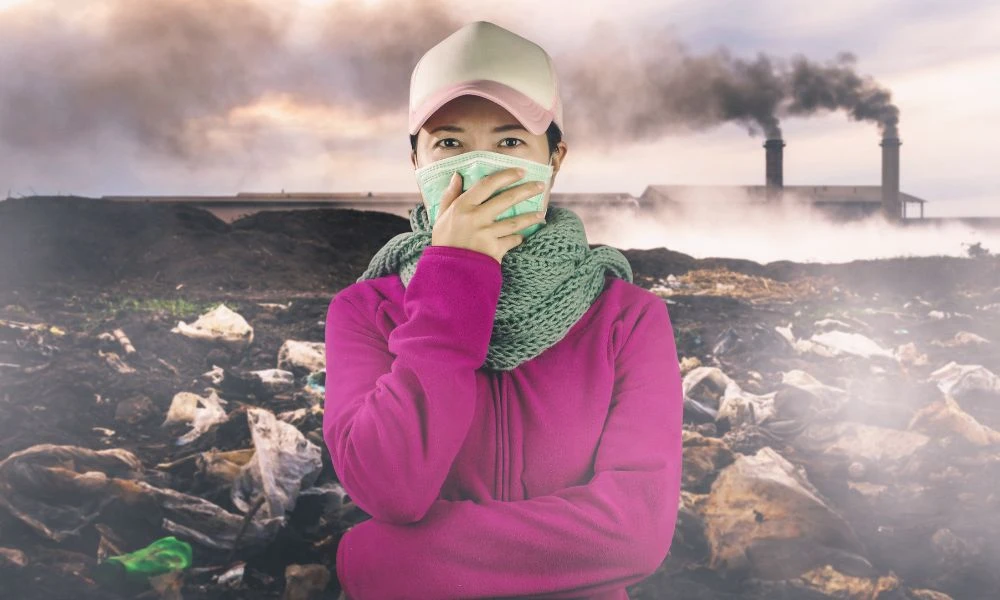Indoor Air Pollution vs. Outdoor Air Pollution represents intertwined dimensions of a complex environmental challenge impacting human health. Indoor pollution arises within confined spaces from various sources, while outdoor pollution extends across the broader environment.
Together, these pollutants pose a collective threat to respiratory health. Recognizing their dynamic interplay is crucial for formulating comprehensive policies that address both dimensions concurrently.
This comprehensive exploration delves into the critical aspects of ambient air quality, the sources of indoor and outdoor pollutants, and the impact on respiratory health. Understanding the nuances of particulate matter, volatile organic compounds (VOCs), air quality standards, and pollution control measures is crucial for creating a healthier living environment.
Ambient Air Quality:
Ambient air quality encompasses the collective state of the air in our outdoor environment, determined by the presence and concentration of particulate matter, volatile organic compounds (VOCs), and other airborne contaminants.
To safeguard public health, government agencies establish air quality standards that regulate the acceptable levels of these pollutants. These standards serve as benchmarks to ensure that the air we breathe meets specified criteria.
Thereby minimizing potential health risks associated with exposure to harmful substances in the outdoor atmosphere.
Indoor Pollutants and Their Sources:
Indoor air pollution originates from diverse sources within our homes and workplaces, presenting various challenges to indoor air quality. Common culprits include volatile organic compounds (VOCs) emitted by household products, dust mites, mold, pet dander, and tobacco smoke.
These sources collectively contribute to the degradation of indoor air quality, posing potential health risks. Exploring the impact of these pollutants allows us to understand the complex dynamics affecting the air we breathe indoors.
Moreover, we will delve into practical measures to mitigate exposure to these indoor pollutants, promote healthier living environments, and minimize the adverse effects on respiratory health and overall well-being.
Check out our blog post on Home Air Quality Testing to learn in detail about indoor air pollutants.
Outdoor Pollutants and Emission Sources:
Outdoor air pollution emanates from various sources, encompassing vehicular emissions, industrial activities, and natural phenomena like wildfires. In this section, we will conduct a detailed analysis of various outdoor pollutants, explicitly focusing on nitrogen dioxide, sulfur dioxide, and ozone.
By exploring the origins and characteristics of these pollutants, we aim to comprehensively understand their impact on overall air quality in urban and rural settings. This examination will shed light on the complex interplay between different emission sources.
It will also help to identify areas of concern, assess compliance with air quality standards, and formulate targeted strategies to mitigate the detrimental effects of outdoor air pollution on public health and the environment.
Indoor Air Pollution vs. Outdoor Air Pollution
Indoor air pollutants from various sources within enclosed spaces differ from outdoor air pollutants originating from a broader spectrum, including vehicular emissions and industrial activities.
Indoor pollutants, such as volatile organic compounds (VOCs) and household contaminants, expose individuals for extended periods, while outdoor pollutants like nitrogen dioxide and particulate matter are encountered intermittently.
Control measures for indoor pollutants involve ventilation and source management, whereas outdoor pollutants are subject to stringent regulatory standards. The health impacts of indoor pollutants are primarily respiratory, whereas outdoor pollutants have a broader range of health effects.
While both require a combination of personal choices and regulatory measures for mitigation, outdoor air pollutants face more standardized regulation with established air quality standards enforced by environmental agencies.
Air Quality Standards and Pollution Control Measures:
To address the challenges posed by indoor and outdoor air pollution, governments worldwide have established air quality standards. We’ll discuss these standards and delve into pollution control measures implemented to reduce emissions, both indoors and outdoors.
Respiratory Health and Airborne Toxins:
The impact of indoor and outdoor air pollution on respiratory health is profound, with prolonged exposure linked to a heightened risk of respiratory issues such as asthma, bronchitis, and pulmonary diseases.
Indoor pollutants, including volatile organic compounds and particulate matter, pose risks, while outdoor pollutants like nitrogen dioxide and ozone contribute significantly to respiratory conditions.
Recognizing the correlation between air quality and respiratory health underscores the urgency for comprehensive measures to reduce indoor and outdoor air pollution, emphasizing the importance of public health strategies to safeguard respiratory well-being.
Environmental Exposure and Health Impacts:
The link between environmental exposure to air pollution and its health impacts is critical to public health research. Exposure to air pollutants, whether indoors or outdoors, has been associated with a range of adverse health effects.
Outdoor air pollution from vehicular emissions, industrial activities, and natural sources can lead to respiratory and cardiovascular issues, worsening pre-existing conditions, and even mortality.
Indoor air pollution from household products, tobacco smoke, and mold is closely tied to respiratory problems, allergies, and other health issues. Research continually reveals the intricate connections between the types and levels of air pollutants and specific health outcomes, guiding efforts to establish and revise air quality standards.
Also, check our blog post where we discuss how Air Testing Labs contribute to environmental health and safety.
The Role of Air Testing Labs:
Air testing labs are instrumental in the fight against air pollution, utilizing specialized facilities to analyze indoor and outdoor air samples for various pollutants. These labs play a pivotal role in identifying and quantifying contaminants, offering essential insights into air quality.
In indoor spaces, they assess specific pollutants, measure levels, and determine sources, enabling individuals to take targeted actions for a healthier environment. The labs contribute significantly to large-scale monitoring efforts for outdoor air quality, aiding compliance assessments, hotspot identification, and formulating effective pollution control measures.
Collaborating with environmental agencies, these labs support regulatory initiatives and ensure that air quality standards align with public health goals. Moreover, the findings from air testing labs contribute to ongoing research, fostering innovation in understanding the health effects of air pollution and guiding the development of interventions and healthcare strategies.
Beyond analysis, these labs play a crucial role in public education, disseminating information to empower individuals to make informed decisions about their living environments and advocating for cleaner air.
Check out SMS LAB’s air testing services for your home or business needs.
Conclusion:
In this comprehensive examination of indoor air pollution vs. outdoor air pollution, we’ve explored the intricacies of ambient air quality, indoor and outdoor pollutants, particulate matter, VOCs, air quality standards, and their impact on respiratory health.
By understanding the sources and health risks associated with each, we can make informed decisions to improve both indoor and outdoor environments.
As we navigate the challenges of air pollution, adopting pollution control measures and advocating for sustainable practices becomes imperative for a healthier and cleaner future.











